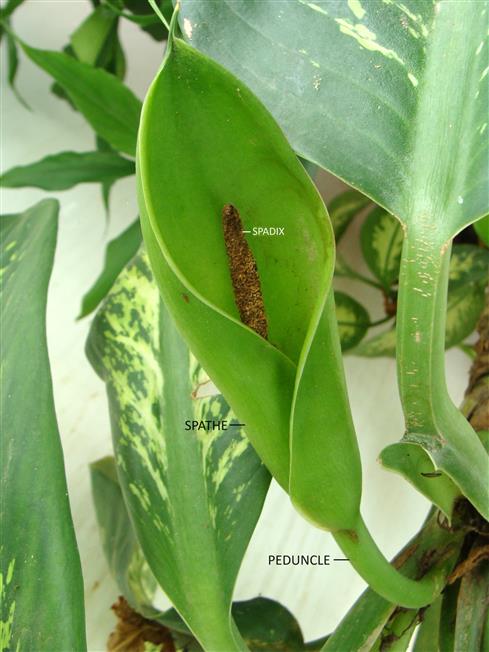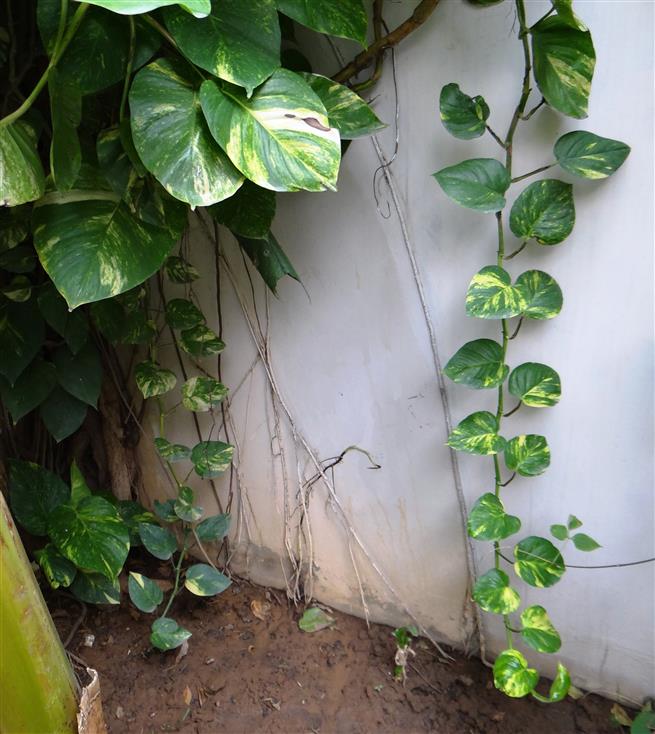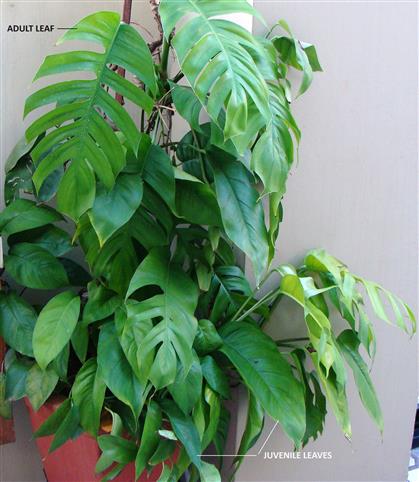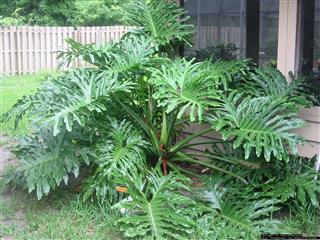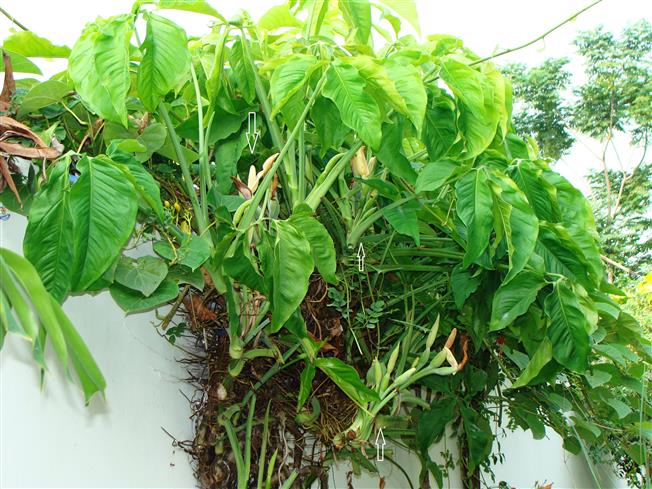ARACEAE
Monoecious or paradioecious (the blooms of an individual plant can be male one year and female the next) herbs or shrubs, sometimes epiphytic or floating aquatic. Roots adventitious. Stem aerial or modified into rhizomes, corms or tubers. Leaves alternate or clustered, petiole with sheathing base, leaf blade simple or compound, elliptic to obovate or spatulate, occasionally sagittate-cordate, venation parallel, pinnate or palmate reticulate. Cataphylls usually present. Inflorescence spadices, each with 3-900 usually tightly grouped sessile flowers subtended by spathe. Spathe usually bisexual, sometimes dioecious, commonly differentiated into lower tube-like base with its margin fused or not and upper expanded part termed as limb, lamina or blade; persistent (sometimes only proximally), variously coloured. Spadix cylindric or ovoid, studded with many, small fertile or sterile flowers; spadix sometimes with a sterile terminal part termed as appendix (see in Arisaema murrayi). Flowers bisexual or unisexual, male and female usually on the same plant or functionally on different plants; male flowers distal to female flowers when unisexual, sometimes sterile (neuter) flowers present at apex and/ or in zone between male and female flowers; spadix sometimes with a sterile terminal appendix. Perianth usually absent, occasionally present, tepals 6 in bisexual flowers. Stamens 2-12, usually 6, free or connate into synandria; staminodes occasional. Ovary 1, 1-3(-many)-locular, sessile or embedded into spadix; style 1; stigma hemispheric, capitate or discoid. Fruits berries, free or connate on maturity. Seeds 1-many per berry.
143 genera and about 4075 species
